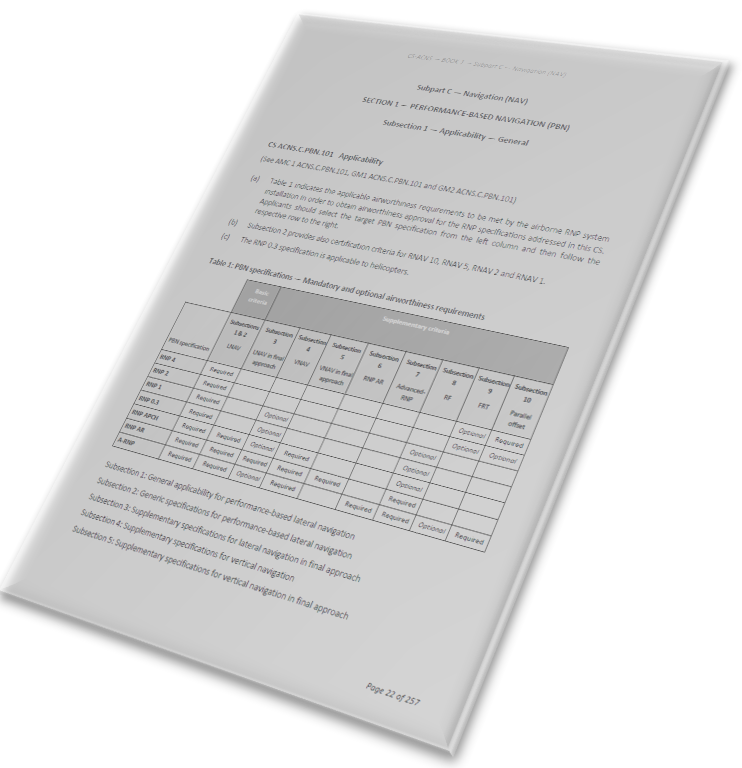EASA Decision 2019/011/R issuing Certification Specifications for Airborne Communications Navigation and Surveillance (CS-ACNS) was published on 26 April 2019. This was the second issue of the certification specification and added a Navigation section to the document. Annex VIII to ED Decision 2021/008/R amended this publication to Issue 3. ED Decision 2022/008/R amended the CS-ACNS to Issue 4 which was published on 5 April 2022 and has superceded the previous edition.
The CS-ACNS addresses RNP certification only and provides the requirements for new aircraft certification of equipment to be used for PBN operations. The associated guidance material in Book 2 the lays out certification equivalency for RNAV specifications.
The previous European certification documents, AMC 20-4 (RNAV 5), TGL 10 Rev 1 (P-RNAV/RNAV 1), AMC 20-26 (RNP (AR) APCH), AMC 20-27 & AMC 20-28 (RNP APCHs) were all superseded with the publication of the second edition of the CS-ACNS.

EASA has considered the current and future aircraft equipment and has assumed that most, if not all, aircraft are equipped with one or more GNSS receivers.
The section of CS-ACNS that is specific to Navigation can be found below. However, the full document is found on the EASA website and can be accessed here.
The basic criteria must always be complied with, regardless of the navigation specification, and ensure compliance with the navigational requirements of the RNAV 10, RNAV 5, RNAV 2, RNAV 1, RNP 2, RNP 1 and RNP 0.3 criteria.
For airworthiness, all aircraft must meet subsections 1 and 2, which addresses lateral navigation (LNAV). Subsections 3 to 10 lay out optional airworthiness requirements to meet vertical operations, RNP AR and Advanced RNP together with the RF, FRT and Parallel offset functionalities.
The FAA have taken a similar approach towards RNAV certification and the FAA’s Advisory Circular (AC) 90-105A addresses RNP specifications only. However, existing certifications for RNAV 1 and 5 still exist and are AC 90-100A and AC 90-96 respectively.
Applicants intending to apply strictly for RNAV navigation specifications predicated on conventional ground navigation aids, i.e. non-GNSS-based navigation, are invited to consult EASA.